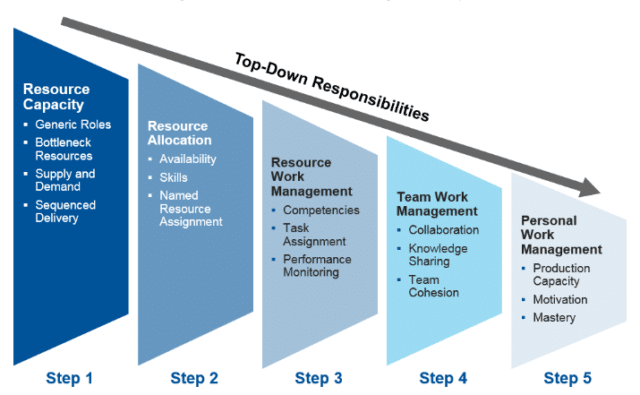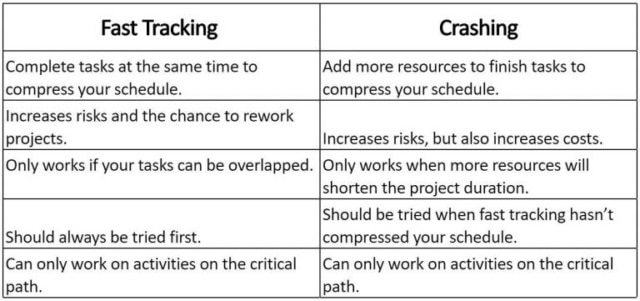We all know that planning and preparation are the keys to maximising a project’s efficiency and success, but how often do you really think about resource management? Though it’s a process often associated with project management, it’s important to remember that resource management is only a small part of a much bigger picture.
What is resource management?
As a process that helps businesses manage their supplies effectively, resource management ensures that financial resources, technology, team members, and their skill set are maximised to full potential. Examples of resources include:
1. Finances
A business might ask whether they have enough finances for their project or whether they’ll need to do some budgeting for certain resources such as tools and technology. When managing financial resources, you might also bring in stakeholders to assist during the planning stage to ensure their input is brought into projects.
2. Team members and their skillset
In short, this area covers the human resource elements of your business; do you have the right people for the project and do they have the skills that are needed? This covers everything from staffing and leaves management to time-tracking workflows to avoid burnout.
3. Technology
When managing technology in resource management, businesses will often ask if they have enough available resources or whether they’ll need to reallocate funds to replace what’s missing.
While this is integral to project management, the two processes are worked on separately to deliver efficient and successful project outcomes. Rather than lumping the two management processes into the same category, it’s time to start really homing in on each individually. For project management to run smoothly, your resource management process has to be taken seriously.
Why is effective resource management important?

Effective resource management is all about ensuring your projects run smoothly, preparing you for what resources you’ll need for maximum efficiency. It essentially gives you an overview of your available resources, preventing finances from being spent on supplies that you may already have or giving you enough time to reallocate funds.
By understanding the allocation and quantity of your resources, you’ll be able to embark on a new project with a forward-looking overview that enables you to pinpoint problems before they arise.
Since resource management focuses on your people and tangible materials, you’ll analyse what kind of skill sets are needed for certain projects. Thus enabling you to see whether you need to bring in other departments or not. Knowing who is working on and managing your human resources accordingly will also help avoid burnout and give you greater transparency.
Resource management methodology is simple; it’s all about creating a project that’s time and cost-effective. By taking a deep dive into resource allocation, planning, and scheduling, you’ll have greater control over your project.
This is why it’s so important to treat resource management as a separate process – devoting time and consideration to it will accelerate your project management strategy. You might even want to bring on resource managers to work with your existing project managers. Merging the two roles will allow for a deeper look into the effectiveness of your resource management techniques.
Resource management techniques
When looking at ways to manage your supplies effectively, there are several resource management techniques you can employ, including:
1) Resource planning
Before you begin implementing any techniques, it’s key you consider resource planning. Like the plans you’d use in project management, resource planning is all about getting an overview of your available resources and the timeframe of your project. That will help you understand what resources are needed and in which quantities for a project.
Your resource plan should aim to cover three areas:
- Objectives – What needs to be achieved, and what are your goals?
- Timeline – What’s the timeframe of your project, and do you have adequate resources for it?
- Team – What role is each employee or department playing in the project?
By making strategic planning a regular part of your business operations, you’ll find that future projects will run more smoothly. Since you’ll understand your capacity and pipeline, you’ll be able to avoid spending money on resources that never end up being used.
2) Resource allocation

Resource allocation is all about making the most out of the resources you have at hand, helping you avoid wasting money on extra supplies and overworking your staff.
When conducting resource allocation, you must use in-house data to run a report on the performance and utilisation of your resources. These reports will give your project greater transparency and enable you to get an overall view of resource availability.
3) Resource scheduling
Well-thought-out planning and preparation is the cornerstone of any successful project, and this is where resource scheduling comes in. When looking at the lifecycle of a project, implementing the following techniques will ensure you allocate resources and tasks to employees at the right time:
- Resource levelling
Resource levelling helps reveal if any team members are being under or over-utilised, enabling you to level out the allocation of your resources. Since resources within your business can be intangible (people and departments) and tangible (materials and technology), this method will help ensure your team isn’t overstretched or underused.
During this process, you might discover that you need to grow your team to deliver a successful project – perhaps your design team isn’t being used to full capacity and could contribute to content? If you can see that a particular department or individual has a mixed skillset, then make the most of the opportunity and utilise them more.
- Crashing

If you’d like to keep within the timeline of your project but cannot overlap tasks, you might want to consider crashing.
Crashing’s a method used to speed up a project’s delivery by allocating extra resources (usual people), but it does come with one downside. Since you’ll be pushing out extra work, this means extra billable time for overtime employees, which could impact the overall project budget.
- Fast-tracking
Used to accelerate the progress of a project, fast-tracking is a method that focuses on finding tasks that can overlap to save time. Compressing the project timeline, fast-tracking can open your eyes to a new way of approaching how you handle resources and activities within your business.
4) Resource forecasting
As part of your planning stage, resource forecasting helps determine what resources you’ll need for a project ahead of time. Thorough preparation is key to any good project, and forecasting will give you an overall view of possible shortages you may face, as well as any potential road bumps.
Ironing out these issues early will help your project run more smoothly and give you an idea of the kind of budget you should be aiming for with your resource allocation.
Best resource management tools
There are some resource management tools and software options available that will help you implement the techniques listed, enabling you to analyse resources and their quantity, as well as their availability.
When focusing on intangible resource management in real-time (your people and departments), it could be useful to bring in timesheets to help track work output, collaboration, and the specific tasks people are working on. To get a broader overall view, consider using project management software to help process and analyse data from your team’s workload and get a better handle on your budget.
Resource management best practices
1. Follow the 80/20 rule

Once you’ve pinpointed resources in short supply, use the 80/20 rule to focus on them and create plans around their availability. Based on the Pareto Principle, this ‘rule’ states that 80% of outcomes arise from 20% of all causes.
You can use this method to identify the resources in your business that have the biggest effect, starting with your team. The 80/20 rule is most often applied to your people and departments, so it’s key you understand who your most sought-after employees are to avoid bottlenecks and delays.
2. Come to a consensus about resource allocation
When allocating resources to different tasks, be sure to reach a consensus about a scoring process to ensure you’re prioritising resources correctly. Monitor any work that presents a delay, and use your metrics to ensure resources aren’t being over or under-utilised.
3. Align tasks to employees based on their skills
When allocating tasks to employees, aim to align their skillset with the appropriate tasks. Some members of your team might prefer a certain method or tool to another, so ensure that the tasks you give them meet these needs. Having the right resources is only a small part of resource management – you also have to make sure your intangible resources are working efficiently.
If you’re a retail brand focused on delivering projects that uplift the CX, RingCentral can help you speed up your project timeline and deliver success. Accelerate your project’s delivery and ensure CX success by investing in our RingCentral For Retail cloud phone system.
Originally published Aug 23, 2021

